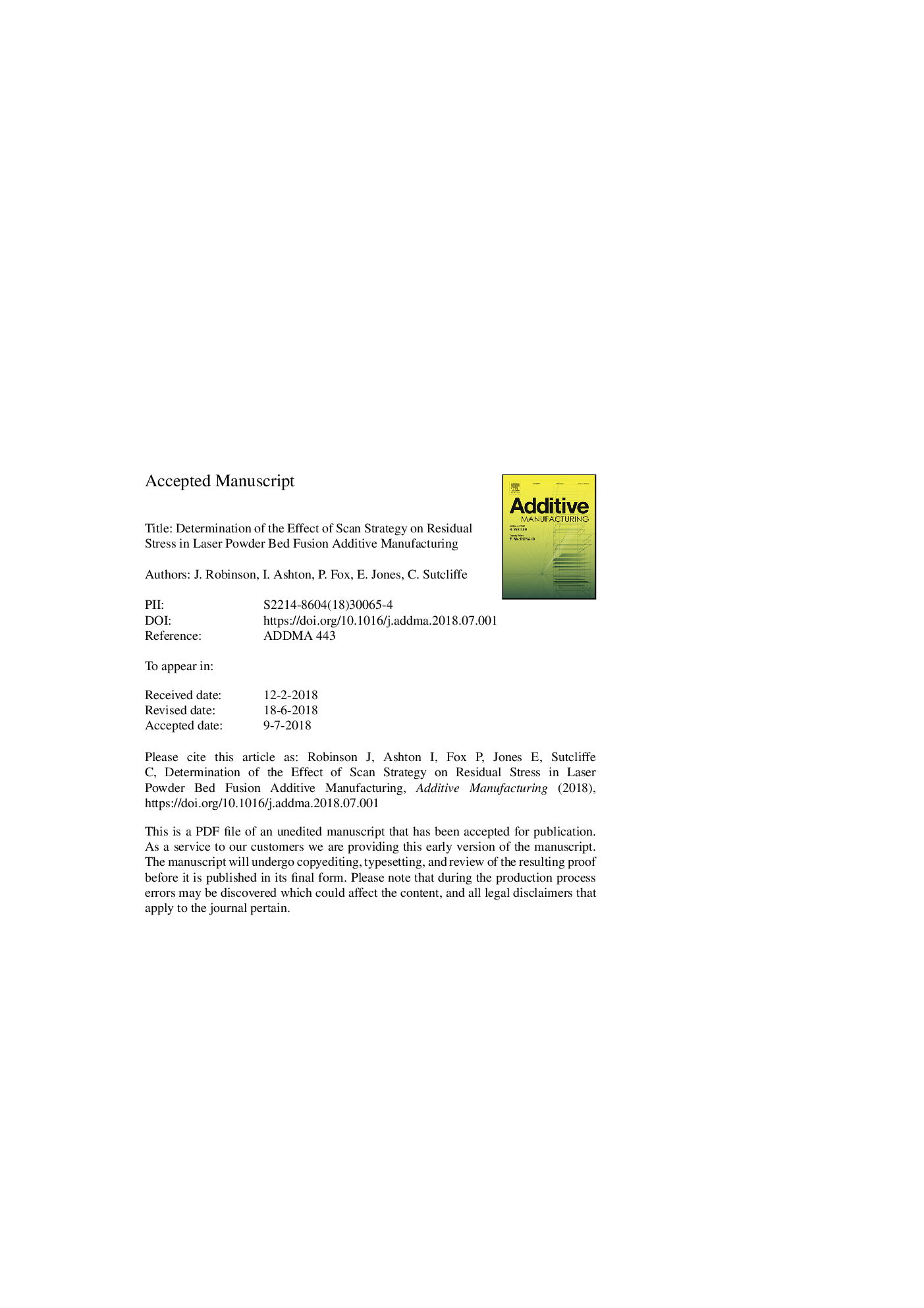| Article ID | Journal | Published Year | Pages | File Type |
|---|---|---|---|---|
| 7205669 | Additive Manufacturing | 2018 | 24 Pages |
Abstract
Any literature investigation of Laser Powder Bed Fusion (L-PBF) manufacturing of metal parts would reveal that the development of internal stresses is a serious limitation in the application of this technology. Researchers have used a variety of different methods to quantify this stress and investigate scanning strategies aimed at reducing or distributing this stress more evenly in the part. The most common methods used to assess the levels of stress in parts are deflection based. These techniques provide a rapid method to give a quantitative comparison of scan strategies and parameters. Although studies have calculated the levels of stress relieved by the measured deflection, these studies often neglect the stresses that remain in the part after release. This study shows that these stresses can still be considerable. Non-destructive diffraction based methods can be used to calculate the profile of stress in a part but these are often prohibitively expensive or difficult to use on a large scale. This study presents a methodology which combines deflection based methods with either the hole drilling or contour methods. Results show that these experiments can be completed in a cost effective manner, with standard lab based equipment to generate a through thickness measurement of residual stress.
Related Topics
Physical Sciences and Engineering
Engineering
Industrial and Manufacturing Engineering
Authors
J. Robinson, I. Ashton, P. Fox, E. Jones, C. Sutcliffe,
